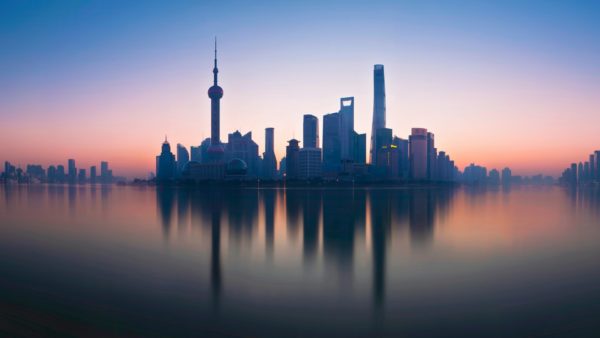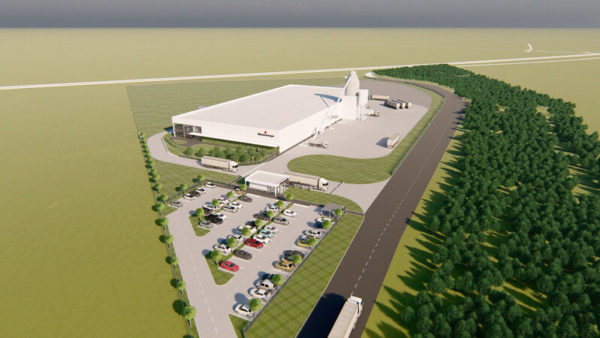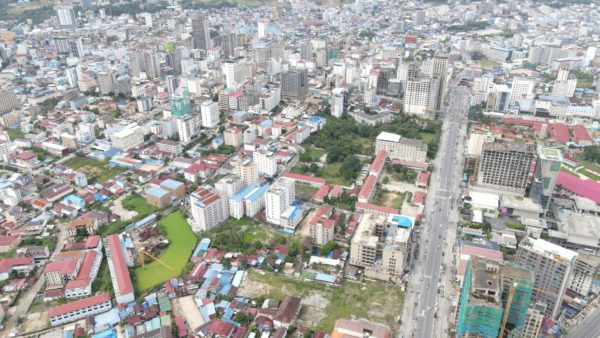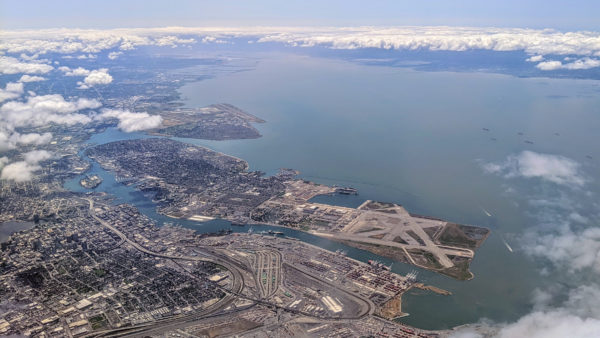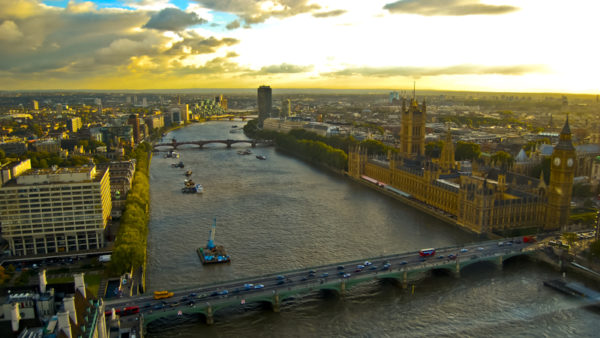The Uber ride-sharing service has showcased six concept designs for its planned "uberAIR Skyport".
The designs, selected from several dozen entries, were shown off at the company’s two-day Elevate summit, which was held in Los Angeles earlier this week.
The Skyports are intended to accommodate flying taxis, or eVTOLs, that bring passengers to high-volume sites such as a stadium or concert hall.
The design brief specified the ability to handle 4,000 passengers an hour within a three-acre footprint. The Skyports should also include charging infrastructure for the drone-like taxis.
John Badalamenti, Uber’s head of design for advanced programmes and aviation, commented: "Today Uber invited six of the most innovative architectural firms to share their concepts at our annual summit.
"This is the culmination of hundreds of designers and engineers that have created dozens of designs for a highly efficient and modular Skyport. While uberAIR might feel like a far-away dream, it’s closer than you think and urban infrastructure has to start to evolve now to keep up."
The shortlisted designs are:
Gannett Fleming’s "The Paw"
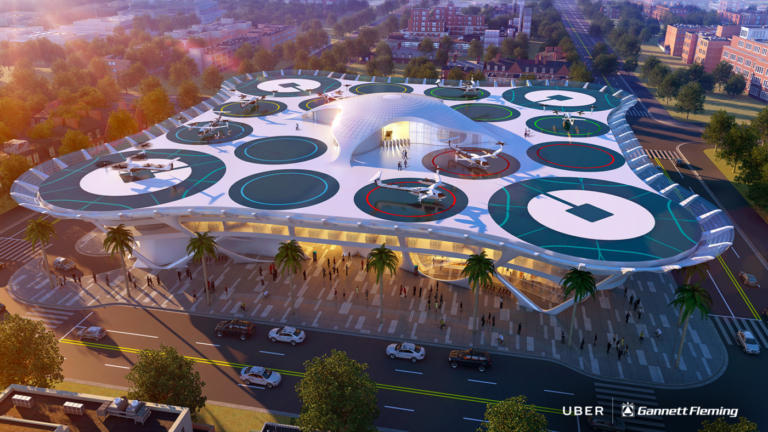
This design includes landing platforms based on cat or dog paws. The design would support 52 eVTOLs per module per hour. Uber could add more modules if demand increased.
The design uses robots to rotate the eVTOL aircraft on their pads to position them for immediate take-off. With sustainability in mind, the Skyport includes photovoltaic receptors and transparent concrete to enable solar recharging.
Pickard Chilton and Arup’s "Sky Tower"
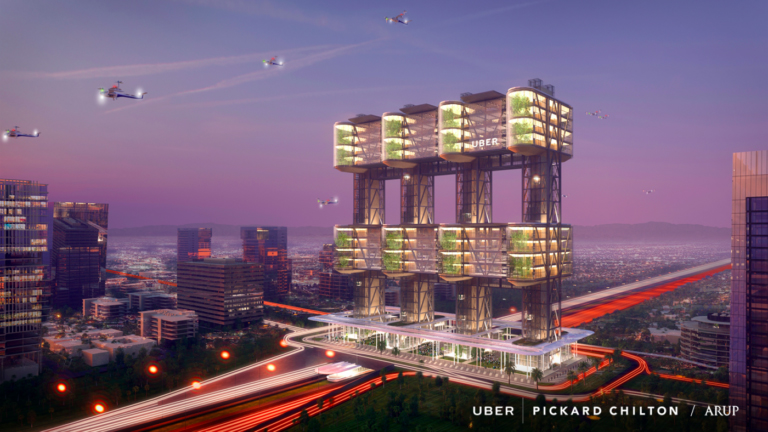
This would allow for 180 landings and take-offs an hour, accommodating 1,800 peak passengers every hour per module. Modules can be combined both vertically and horizontally to allow the Skyport to adapt to the city landscape. Jon Pickard describes it as "an elegant yet highly engineered and sophisticated work of architecture". Â
Corgan’s "Connect"
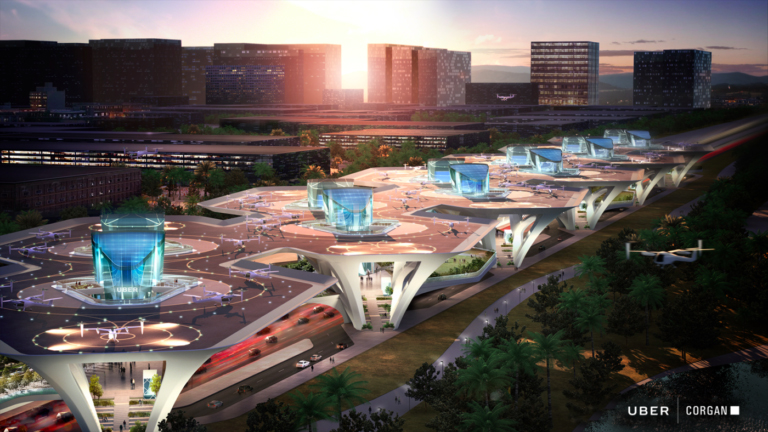
This design sits over existing highways, and would reconnect communities divided by urban motorways. John Trupiano, principal at Corgan’s Aviation Studio, said the design developed a paradigm for public access to eVTOLs.
He said: "We extended it to explore how Skyports could reconnect the community, how they can become an important amenity to the neighbourhood, and how they could bridge some of the divides we see in our cities."
Humphreys & Partners: Uber Hover
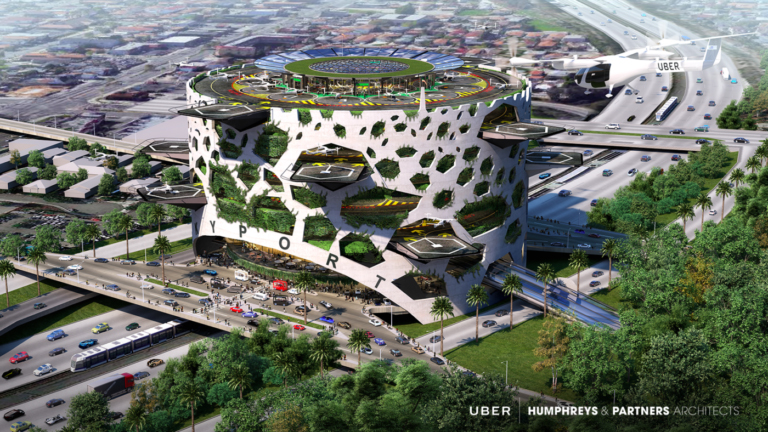
Humphreys & Partners concept is modelled on a beehive, and it envisages eVTOLs following similar flight paths to a bee’s when entering and leaving. The design accommodates 900 passengers per level, per hour.
Walter Hughes, Humphreys & Partners’ vice president of design, said: "Developers constantly ask us about the future of parking garages, as modern modes of transportation reduce the need for traditional parking. Uber Elevate offers a viable solution. We focused on a design that can easily be replicated and expanded. Add retail, office and more, and we’ve expanded the meaning of a multi-use space."
The Beck Group: The Hive

The Beck Group’s also borrows from the hexagonal forms found in hives. The shape is flexible and scalable and each module can accommodate 150 take-offs and landings per hourr.
"‘The Hive’ Skyport draws its inspiration from significant precedents in the design of transportation hubs, and from the beauty and practicality of the hexagonal form created by honeybees," said Michael Kaiser, principal at The Beck Group. "Key features from historic train sheds and modern airports ground the design solution. Its shape is organic, practical and serves as a metaphor for activity. Skyport will be scalable, a key factor, as this type of transportation grows in popularity among Uber’s ever-mobile clientele."
BOKA Powell: Skyport Prototype
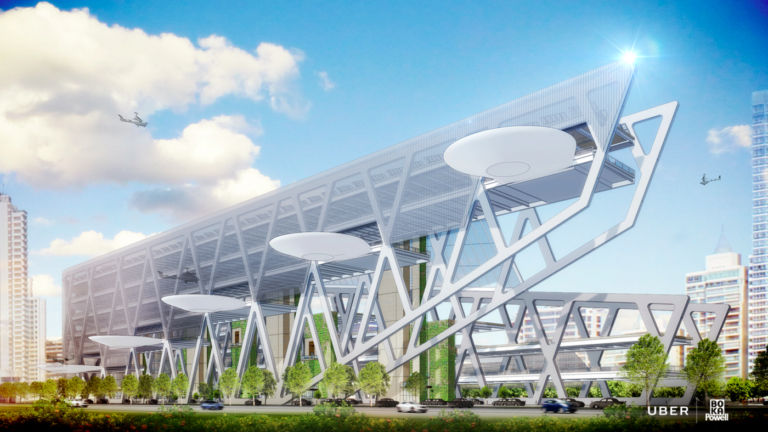
BOKA Powell’s Skyport allows for a directions of landing and take-off to be changes to accommodate wind changes and can support an average take-off time of less than three minutes.
Andrew Bennett, principal at BOKA Powell, comments: "The real key to this solution is the mechanical precision and syncopated rhythm of handling both the aircraft and the customers. By solving these complex processes, the spirit and wonder of future aviation dreams are possible."
Further reading:





